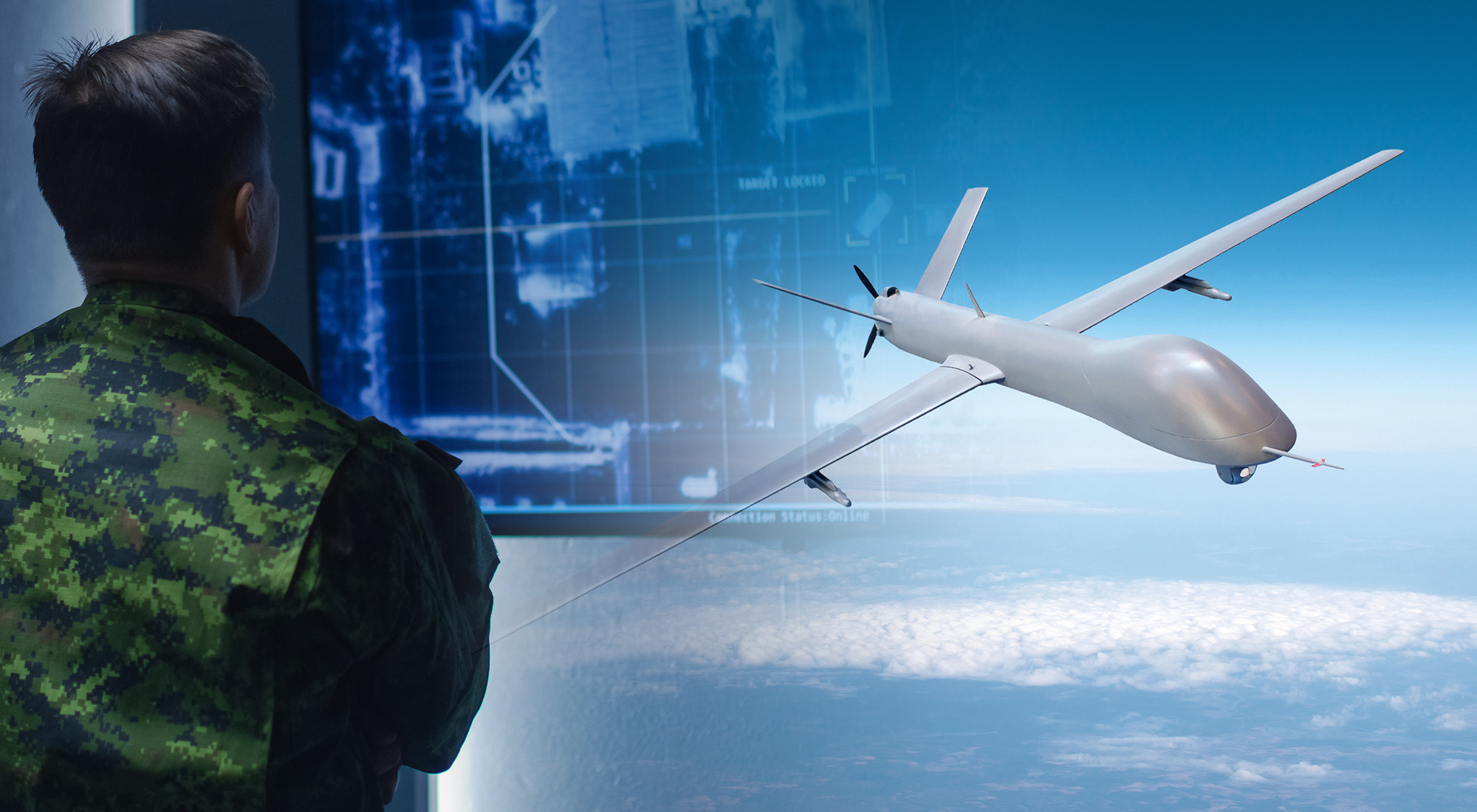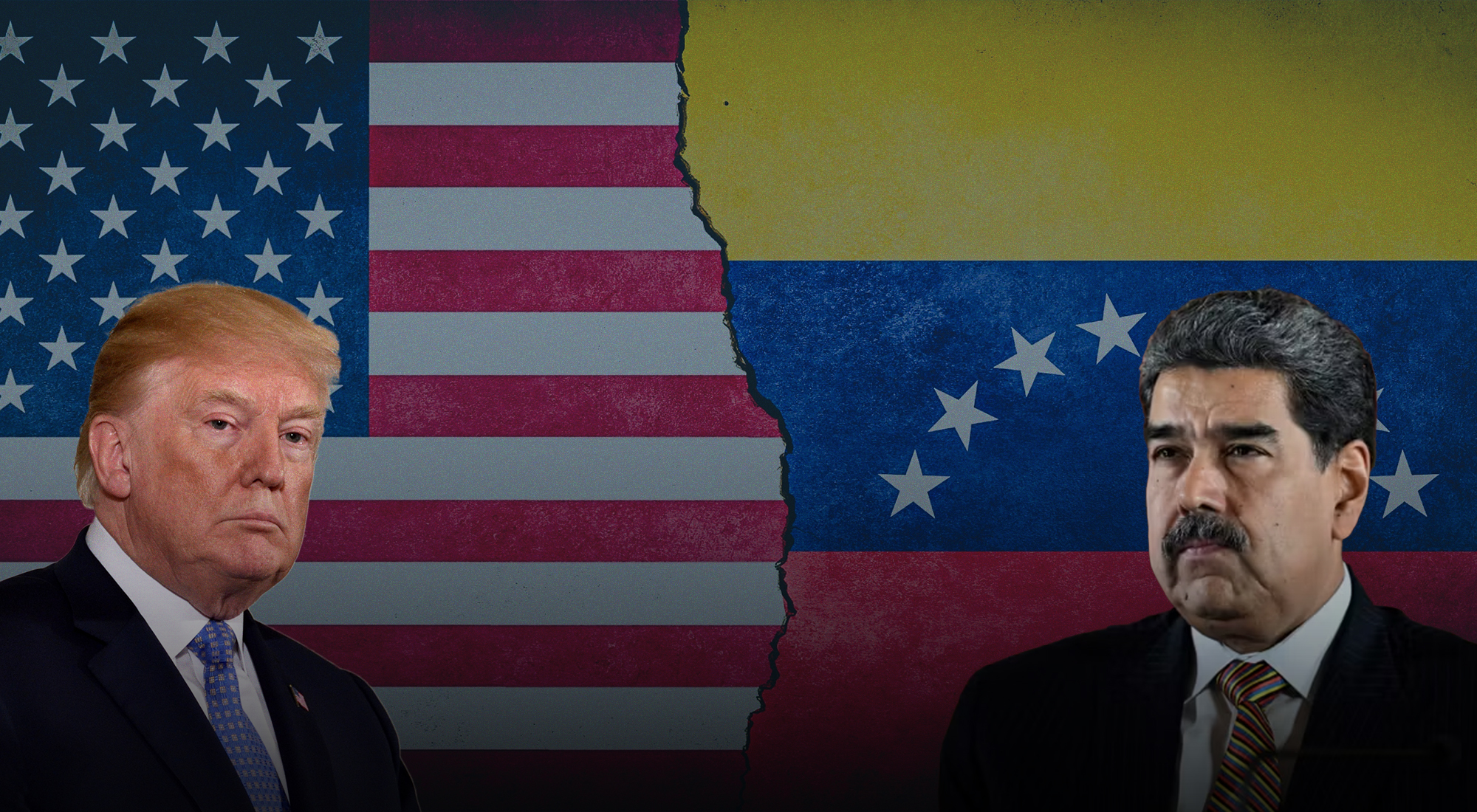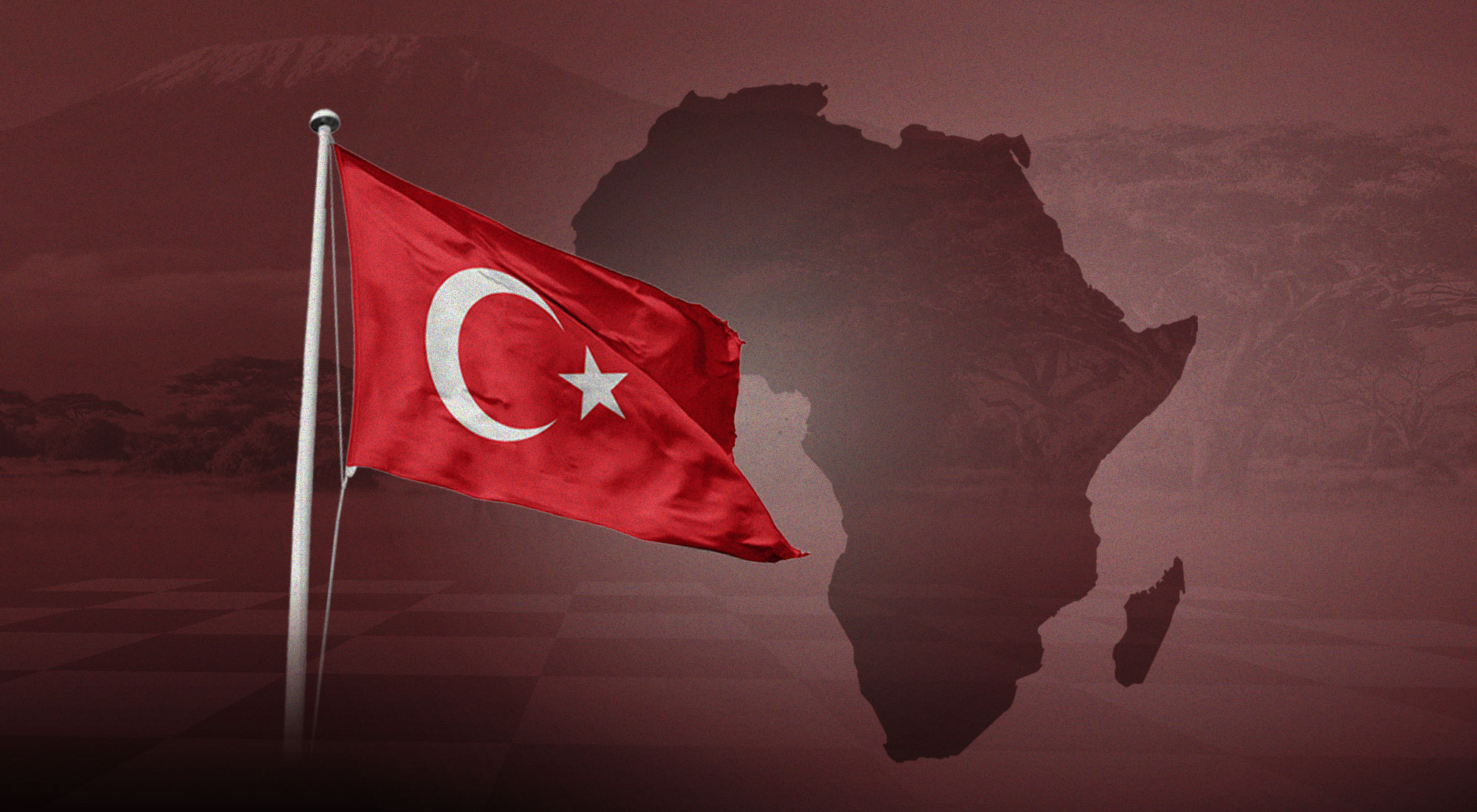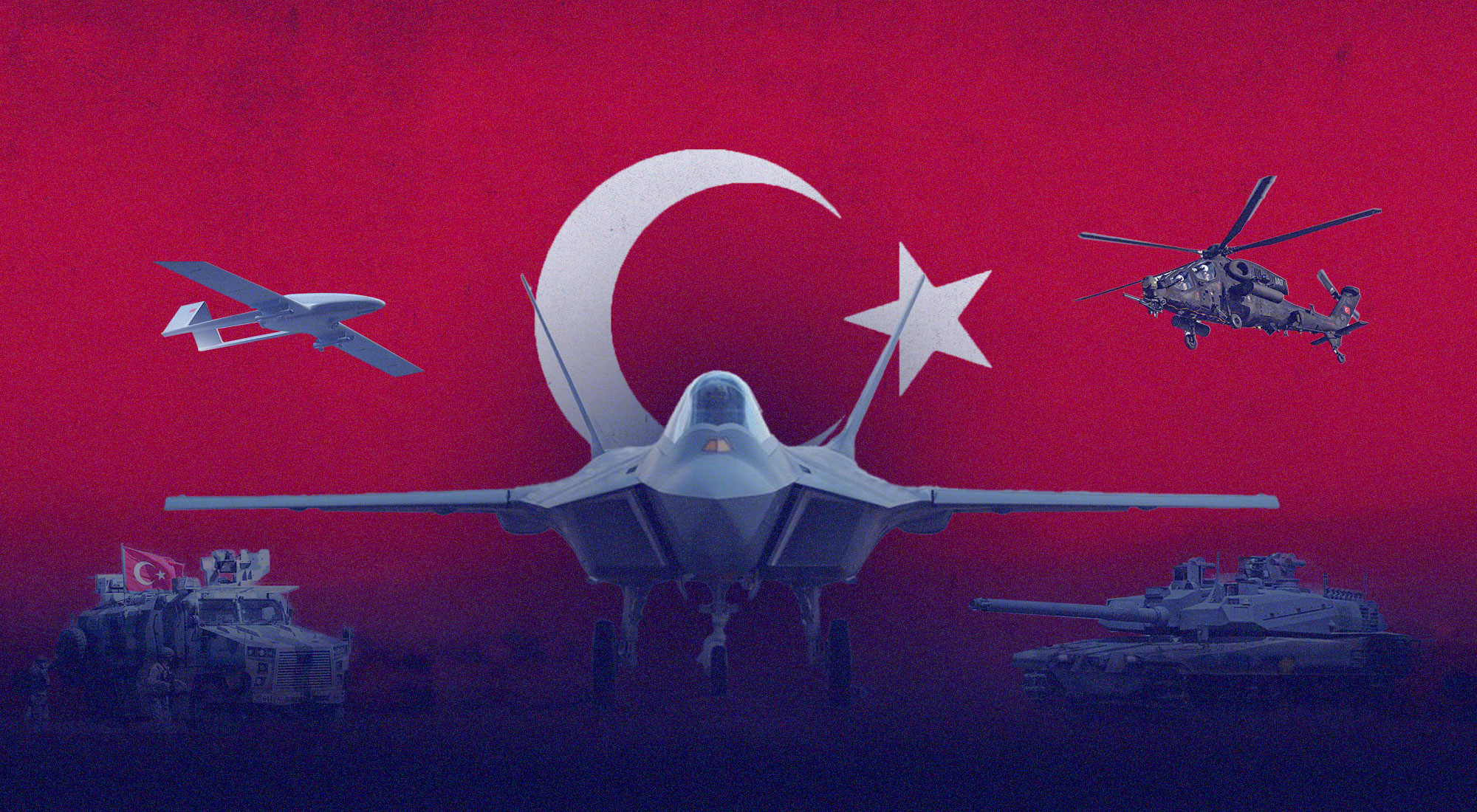They have been hailed as game-changers and revolutionary for the nature of warfare. They have captured the interest and attention of the majority of the world and are now part of almost every military operation. Unmanned aerial vehicles (UAVs), commonly known as drones, are everywhere and here to stay, but who is behind the operation of these systems? What does it take to be a pilot of some of the world’s most sophisticated platforms? What unique challenges and stresses does this work bring in contrast to piloting a manned aircraft? This article attempts to shine light on these questions through a compilation of personal experiences shared by different pilots, flying diverse models of drones from a variety of countries. In order to achieve this, several interviews were conducted by the author with two current military drone pilots, over a period of one month, which were combined with a collection of further accounts given by three additional operators to media, accessible on the public domain. Through this, the article seeks to piece together contrasting and similar encounters, struggles and first-hand insights about what it is like to be a drone pilot in the twenty-first century, and where the future of these technologies is heading.
Setting the stage
Today, more than 100 countries and non-state groups have UAVs, with a significant number having access to armed drones.[1] While the past two decades saw Israel and the United States lead the way as the largest producers and exporters of these technologies, over the past few years this has greatly changed, with new players emerging including China, Iran, and Türkiye.[2] It must be noted that not all drones are armed and that there exist several types, as well as sizes, deployed for a variety of purposes. The four most common types are: multi-rotor drones (with more than one motor), which are often the easiest and cheapest alternative for surveillance-based missions; fixed-wing drones (one rigid wing), which cover longer distances and areas; single-rotor drones (one rotor and similar to a helicopter) that are ideal for heavier payloads; and fixed-wing hybrid vertical take-off and landing drones (rotors attached to fixed wings), which do not rely on a runway to land and are often used for deliveries.[3]
Bearing in mind that a number of former and current military drone pilots are bound and restricted by non-disclosure agreements, which are common in this line of work, below are the profiles of the ones who were able to contribute to the making of this research.
Alexandre Fitz was initially deployed with the French Air and Space Force (AAE) in Afghanistan, in 2009, as part of the first French operational intelligence, surveillance and reconnaissance (ISR) UAV deployment. He served as the first Harfang drone liaison officer in Kabul, where he was responsible for integrating this new system into the structure of the International Security Assistance Force (ISAF) headquarters. He then went on to become Detachment Commander and Tactical Coordinator on ISR aircraft in the Sahel, where he piloted and coordinated surveillance and combat missions as well as cross-cueing operations with AAE MQ-9 Reapers over Mali, Niger and Burkina Faso. These were conducted to provide close-air support and intelligence gathering toward the objective of neutralizing Jihadist groups.
Chris Xylokotas has been a drone pilot for Greece’s Hellenic Air Force for two years while also maintaining his helicopter currency (he can fly four different types and has an instructor pilot license). He has totaled 600 flight hours in numerous intelligence, surveillance, target acquisition and reconnaissance (ISTAR) missions as a pilot and operation commander. More specifically, he flies the Israel Aerospace Industries (IAI) Heron-1 drone model in the medium altitude long-endurance (MALE) category.
The remaining insights constitute online interviews given previously by other UAV operators. These include a British Royal Air Force (RAF) drone pilot, with the pseudonym Justin Thompson, formerly deployed in Afghanistan; U.S. Master Sergeant Kent McDonald of the Army Special Operations Aviation Regiment, who flies Predator UAVs (currently the MQ-1C Gray Eagle) and for the most part has been stationed within the country; and a U.S. Air Force operator who chose to remain anonymous.
Similarities: Flying unmanned versus manned aircraft
First and foremost, it is important to emphasize that each pilot’s experience will differ in some respects depending on a number of factors, ranging from their work conditions to the location of their deployment. Hence, some of these insights and generalizations might not be applicable to their personal journeys. Nonetheless, one element that seems to be agreed upon by a majority of drone pilots is that it requires many of the same skill sets that it takes to fly other manned platforms (aircraft, jets, helicopters, etc.). Most commonly, they need to have an operational background and be able to effectively multitask in different theaters of operations (in the air, on the sea, or on the ground), have fast reaction time, disseminate information rapidly, and deal with a very demanding workload.
In fact, a number of pilots come from a background of flying manned systems, among them Chris Xylokotas, who is both a drone and helicopter pilot for the Hellenic Air Force. When asked if there were specific motivations that would drive an individual to choose between flying one versus the other, Xylokotas said: “Personally I believe drones are the future and I felt that I should be part of this evolution in aviation… Another driving factor for me was during my training in the U.S., where I learned about manned-unmanned teaming (MUM-T). I realized that I needed to expand my skill set.” He continued to say that since he still flies helicopters, so as to maintain his license, he is able to combine both in his career. For others, it simply came down to finding more purpose in one than the other. In a 2014 interview with Foreign Policy, a U.S. Army Force drone pilot stated: “We’re at the point where RPA [remotely piloted aircraft] pilots are getting the most combat experience of anyone… A lot of the most significant work is being done in the RPA community and that’s drawing in top-tier guys. There’s pride associated with flying RPAs… I find what I do now to be more meaningful than anything else I could think of.”[4]
In many ways, while a drone is remotely operated, it is still very much a manned system requiring the involvement of a large number of people in operating it. As Xylokotas explains: “You have to use all available resources and systems while flying an RPA from a 500-1000-kilometer distance to achieve the highest possible situational awareness and keep a safe distance from other aircraft.”
Challenges
In terms of personal challenges faced when operating a UAV, Alexandre Fitz says that several challenges arose during his last detachment in the Sahel, flying and coordinating MQ-9 Reaper missions, which involved many foreign units. One of these concerned the implementation of common, standardized procedures and briefings with UAV crew, as well as issues with radio-communication and discretion, due to forces speaking different languages. An additional difficulty, he said, was that tasks had to be adapted and performed in a desert environment, in high-level threat and security conditions.
“One day, when flying as mission commander on ISR aircraft/airborne C2, in flight coordination with one MQ-9 UAV, we detected some insurgents on motorbikes that split on two different roads and I had to quickly decide on which road to task the Reaper, with no additional information… Having chosen the southern one, it led us to a compound with many more rebels. When flying ISR assets, you must always think about the discretion of your flight (altitude and wind) in order not to be detected too early,” explained Fitz.
Chris Xylokotas also shared some of these insights, stating that, for him, the first and most important challenge in piloting a military drone beyond visual line of sight (BVLOS) “is to separate from manned military and commercial aircraft while maintaining flight safety from taxi and take-off to landing.” In a similar fashion, U.S. Air Force drone pilot Master Sergeant Kent McDonald said in an interview that a peculiar and significant hardship certain operators face is the time lag that can occur when flying a UAV between real-time action and images transmitted via satellite communication (SATCOM).[5] “If I’m flying line-of-sight, which you do a lot, there’s little to no lag at all. But if I’m flying SATCOM…it could be anywhere from two to fifteen seconds,” McDonald explained.[6]
On difficult temperature environments, Xylokotas noted that since a pilot is not in the cockpit of the drone, the individual does not have the same feeling and judgment, and thus has to rely on its sensors and payload cameras to assess weather conditions. Both Xylokotas and Fitz further acknowledged the challenging work hours they face. The long-endurance capability of advanced military UAVs comes at a cost, Xylokotas says, where new crew management issues arise and mission commanders now need to manage operations that can last anywhere between 12 to 16 hours, or more. On this, Justin Thompson, a British drone pilot for the RAF, who was stationed in Afghanistan, concurred in a 2017 interview for Drone Wars, calling the workload “incessant operational tasking.”[7] “Other units I’ve worked on, you would have times when you were busy and you would have times when you were not so busy. This was constant and never ending,” he said.[8]
As demand for both non-armed and armed drones have skyrocketed, alongside the role they play in military operations, it has affected the duties of pilots, resulting in both longer and more frequent missions. Today, more drone pilots are needed than some twenty years ago and effective crew management is as important as ever when it comes to flying in shifts, planning, and personnel rest. Each country tends to have its respective program to train military UAV pilots, but taking a look at a more traditional procedure can be beneficial. In the U.S., military drone pilots are required to have a high school diploma and choose the Armed Services Vocational Aptitude Battery (ASVAB). They must also be American citizens to be able to qualify for secret security clearance, which is a critical element as these systems involve a wide range of intelligence and national security matters. Trainees then have to attend a ten-week boot camp, followed by a long and intensive training program in Arizona (which operates the largest UAV training center and trains all Army branches). Pilots spend approximately 21 weeks (5.5 months), sometimes more, in courses learning rules of flight, performing ISR simulation missions, preparing maps, graphs and intelligence reports, as well as examining aerial photos using computer and AI systems.[9] It may also happen that a country does not have the proper training facilities, in which case students are sent abroad to other allied nations to get certified.
War at an intimate level: Dynamics of drone operations
To understand some of the unique obstacles and differences UAV operators experience, it is important to highlight the type of environment they work in. For instance, unlike flying a jet, drone pilots evidently cannot physically be inside of their systems, which creates an interesting, and sometimes disturbing, set of interactions for some.
From the ground, drone pilots are placed in a ground control station (GCS), which acts as the central command and control hub for UAVs. GCSs can be located near the drone, but are oftentimes hundreds or thousands of kilometers away from the theater of operation. From the outside, these stations somewhat resemble secluded bunkers and are equipped with commercial-off-the-shelf or customized technologies (computers, radars, sensors, etc.), which pilots rely on to monitor and control the drones.
As mentioned previously, some UAV missions can last a very long time, where a pilot is required to look at video screens for hours at a time in the same area while interacting with individuals on the ground. This can lead to emotional attachments. As the anonymous U.S. Air Force operator explains: “You build relationships. Things are a little more personal in an RPA than in an aircraft that’s up for just a few hours. When you’re talking to that twenty year old with the rifle for twenty-plus hours at a time, maybe for weeks, you build a relationship. And with that, there’s an emotional attachment to those individuals… I think it makes people more focused on the mission.”[10] Nonetheless, he warns that it certainly makes some operators more emotionally invested, calling it “the man-in-the-loop aspect” of RPA operations.
This quite unique aspect of the job has been at times distressing for a number of pilots for several reasons. Among these, two seem to stand out. On the one hand, as a drone operation requires an operator to interact with people before and after an engagement, witnessing the Battle Damage Assessment (BDA) can be particularly hard. This was the case for Justin Thompson, who admitted suffering from stress from undertaking air strikes and having to watch the BDA. The RAF pilot also admitted to having struggled with the back-and-forth transition between ‘war life’ in the GCS and his usual ‘everyday routine’.[11] “The most difficult thing was flip-flopping between the mindset of being on live operations, and then being at home with the family,” he told Drone Wars.[12]
A major difference between flying a drone versus a manned aircraft is that the latter often requires pilots to be stationed at a base for months at a time, where they will go out, fly a mission and then return to the base to begin planning the next operation. The reality of a UAV operator is different in that the individual might not be on the battlefield physically, but is there mentally for extended periods of time, interacting on a personal level with people on the ground. However, when the pilot steps out of the GCS, he is no longer there (wherever the mission takes place). It requires operators to be able to exist simultaneously in two distinct worlds, which can be extremely taxing.
Future of drone technology and defying PlayStation mentality
A misconception about drone piloting – so common that it has earned the name of ‘PlayStation mentality’ – makes reference to the dissociation between troops and the consequences of their actions as a result of the use of weapons bearing similarities and resemblances to video games. While several pilots that were part of this study did agree that video game skills can be of use in their work, the false connotation behind this concept is seen by some as belittling their profession. Thompson sees this phrase as “denigrating the professionalism of air force pilots, both in terms of the skill needed to fly the aircraft, [and] also in its suggestion that drone pilots are shielded from the consequences of launching air strikes.”[13]
It is important to reiterate that in video games, no actual individual dies, which is often a sight and trauma that drone pilots have to witness and carry with them.[14] In 2013, a research report studied the mental health aftermath of U.S. Air Force drone pilots and manned aircraft operators between 2003-2011, based on their electronic health records. It found that at least 8.2 percent of UAV pilots and 6 percent of manned aircraft pilots had recorded issues consisting primarily of diagnosed mental disorders and mental health problems linked to ‘partner relationship problems’ or ‘family circumstance problems,’ which only required them to get counselling.[15] Although it is likely psychological help is available and offered in a number of military programs globally, it is not known to what extent it is encouraged.
When asked what changes they would make to the current designs of drones on the market, the pilots had creative answers. Xylokotas suggested shifting the industry approach between commercial and military designs. As he points out: “After decades of unmanned aircraft development for defense purposes, there is significant progress in the commercial drone industry, which in my opinion is much more innovative and fast-paced compared to the corresponding level in the security industry. We should combine military and commercial technology in a universal multi-purpose unmanned platform with long-endurance, vertical take-off and landing, and fast deployment capabilities with open architecture in payloads depending on the mission, commercial or military.”
He also noted that when it comes to the future of this technology, he foresees a combination of both manned and unmanned aerial platforms in a way that pilots in the cockpit would no longer be necessary as most aircraft would be remotely piloted, not only in ISR missions but also in troop and cargo transport. For his part, Fitz recommended improving the interoperability and flexibility of UAVs so that they could be used for more than one type of operation, as well as “developing quickly more autonomous systems because of their vulnerability to communications and GPS jamming.” In his opinion, these further multi-connected and interoperable stealthy systems, equipped with artificial intelligence, are what to expect in the next decade, but “man must absolutely stay in the loop.”
References
[1] Jonathan Marcus, “Combat Drones: We Are in a New Era of Warfare – Here’s Why,” BBC, February 4, 2022, http://bitly.ws/yPwU.
[2] New America, “Introduction: How We Became a World of Drones,” http://bitly.ws/yPxC.
[3] James Rennie, “Drone Types: Multi-Rotor vs Fixed-Wing vs Single Rotor vs Hybrid VTOL,” AUAV, November 8, 2016, http://bitly.ws/yPxU.
[4] Thomas E. Ricks, “Interview with a U.S. Air Force Drone Pilot: It Is, Oddly, War at a Very Intimate Level,” Foreign Policy, November 6, 2014, http://bitly.ws/yPyb.
[5] Ken Heron, “The fascinating World of a Predator Drone Pilot | MSG Kent McDonald,” [YouTube Video], September 4, 2021, http://bitly.ws/yPyu.
[6] Ibid.
[7] Chris Cole, ‘“It Was Incessant’. Former RAF Reaper Pilot Speaks to Drone Wars,” Drone Wars, May 30, 2017, http://bitly.ws/yPyH.
[8] Ibid.
[9] “Join the Armed Forces and Become a Military UAV Pilot,” Garmax-Aviation, November 5, 2020, http://bitly.ws/yPyU.
[10] Thomas E. Ricks, “Interview with a U.S. Air Force Drone Pilot: It Is, Oddly, War at a Very Intimate Level,” Foreign Policy, November 6, 2014, http://bitly.ws/yPyb.
[11] Chris Cole, ‘“It Was Incessant’. Former RAF Reaper Pilot Speaks to Drone Wars,” Drone Wars, May 30, 2017, http://bitly.ws/yPyH.
[12] Ibid.
[13] Ibid.
[14] Michael Barbaro and Dave Philips, “The Unseen Trauma of America’s Drone Pilots,” New York Times, May 9, 2022, http://bitly.ws/yPzT.
[15] Jean L. Otto and Bryant J. Webber, “Mental Health Diagnoses and Counseling among Pilots of Remotely Piloted Aircraft in the United States Air Force,” National Library of Medicine 20, no. 3 (2013): pp. 3-8, http://bitly.ws/ySTg.








